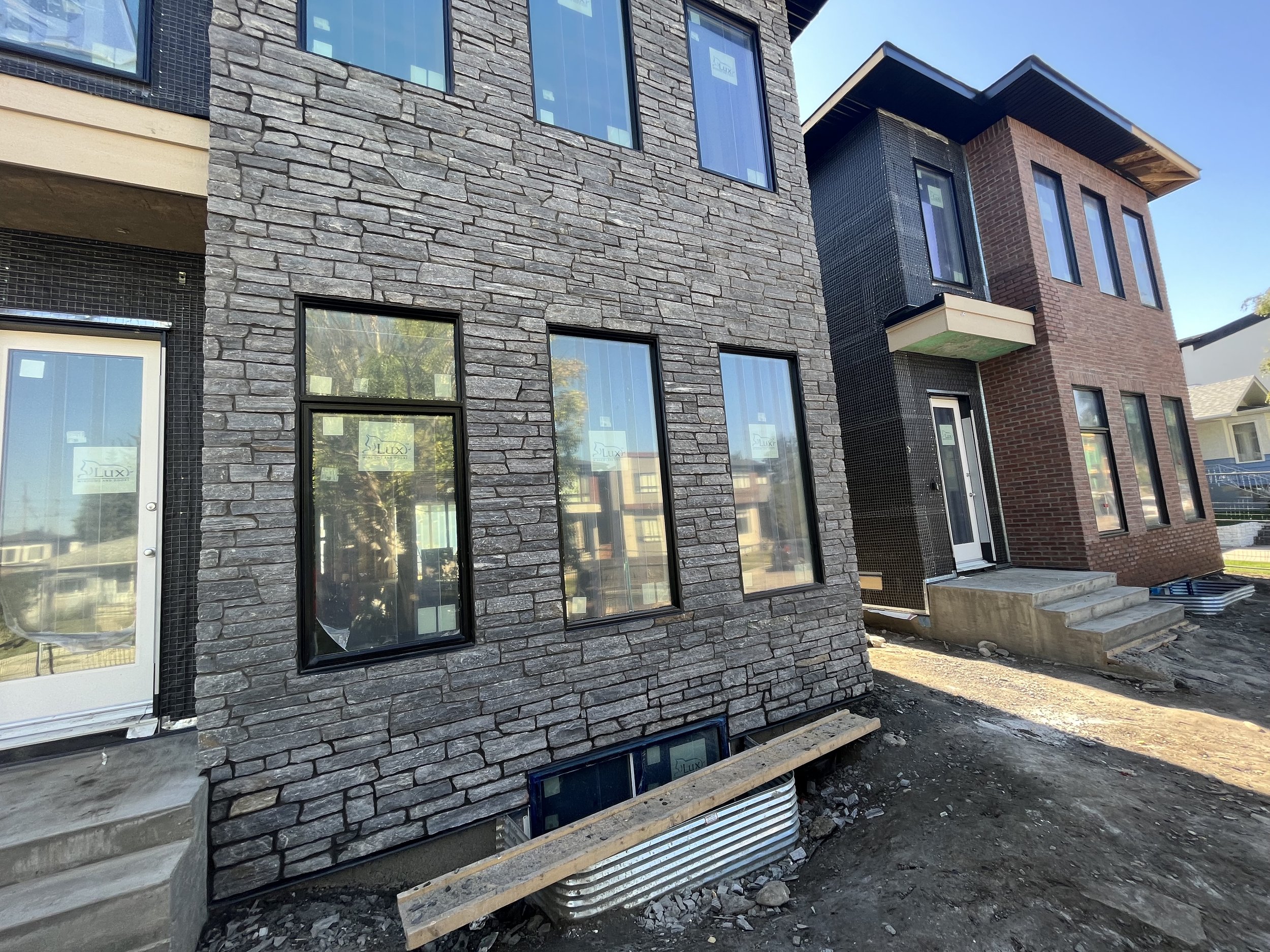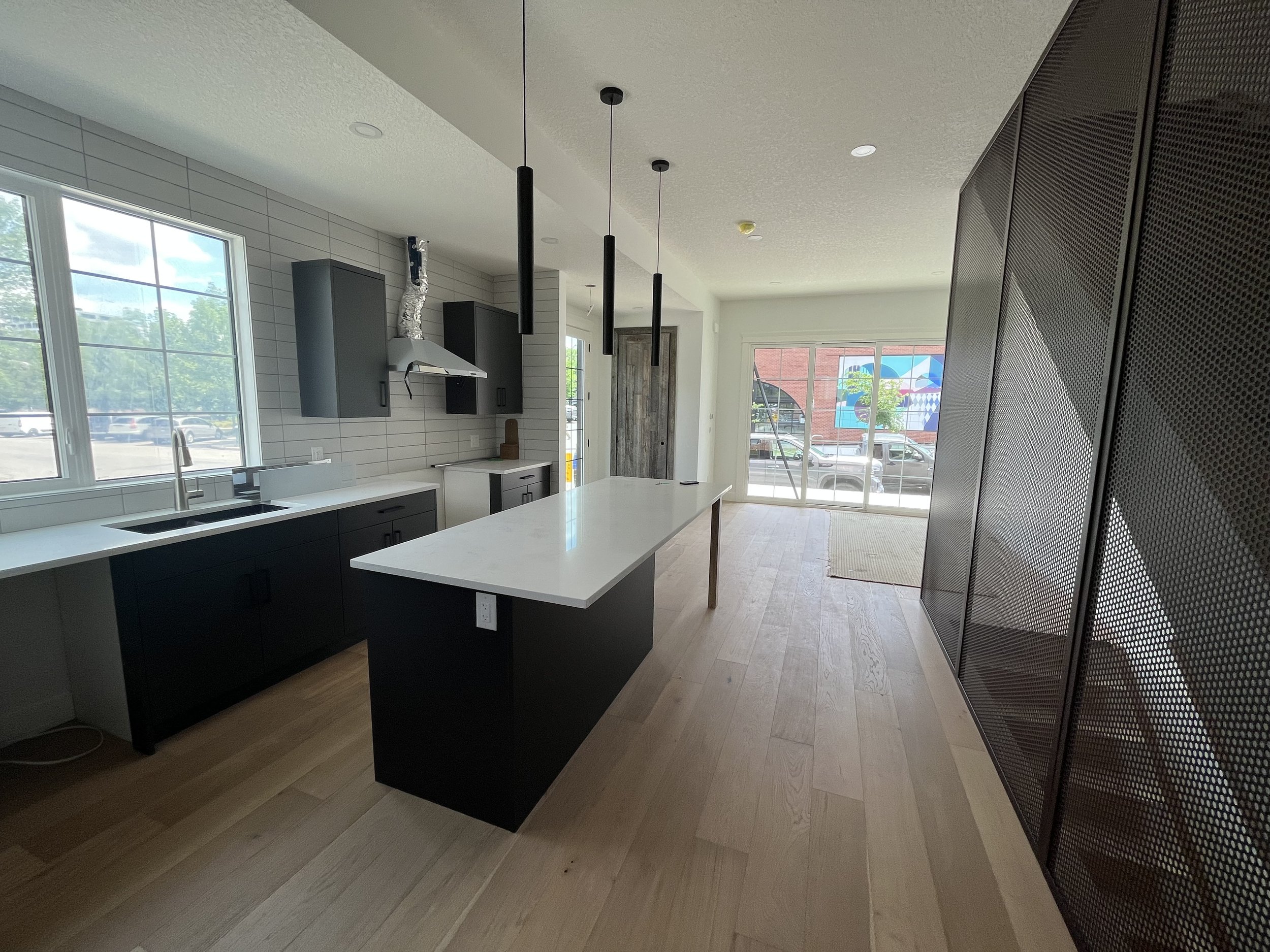Value creation is the art and science of infill development success, where the end product exceeds the cost of the inputs (land, labour, material, expertise, time value and risk capital). The inputs are in the care and attention of an individual or team entrusted with execution. The magic recipe is found in the quality and efficacy of the executor. Highly Leveraged land ownership, an unrealistic concept drawing, and a vague but optimistic marketing pro-forma is not execution, it is speculation, or a fairy tale. I don’t daydream about value creation aspirations, I live it 100% of the time, and I’m intolerant of such dabbling dilettantism in my market by weak handed players. Below are a few of the key questions likely to be common to most infill projects, and some answers related to my value creation experience.
What is the execution and what does it mean to do it well, can you measure execution? The execution is the degree of mastery of the inputs and tasks that lead to value creation. Generally this is going to be the builder combined with project manager, that can be the same entity in smaller projects (my typical project has been too small to divide these two). I believe execution and value creation are inexorably linked, but the execution is more measurable, against a budget, schedule, and relative quality of work. The value creation part is determined by the market, client reaction, appraisal, and appeal to the credit market. For classic purpose built rental projects, the value creation is theoretical because it is only measured by an appraisal if required by a banker looking to check a qualification box. I wont pursue an opinion on market value if it is not required to get financing, as the report is quickly outdated. I have executed projects extremely well, while allowing myself some grace for the inevitable screwups and do overs.
Is value creation all about profit and margin? No, profit suggests a sale, or a cessation of value creation. Value is enduring and is a continuum, that grows over time. The allure of creating value is distinct from cashing out of a project, which tends to create a taxable event, value is not necessarily taxable, today, with the removal of new rental supply GST, value is given preferable tax treatment vs spec home business. The sheltered nature of value creation is a storage of wealth in a physical asset, and can be leveraged into more value without being lost or traded. A benefit of value, is that once created, it can provide a more passive income source, a stark contrast to the act of execution, an intense period of action, the opposite of passive. Transfer of the energy and willpower of execution of value creation into passive income, is the key to the longevity and resilience of the developer. Avoiding transaction fees and letting the compounding nature of these assets work over time is how value is nurtured over decades.
Can the execution be outsourced? I think perhaps, but the more outsourced is the execution, the more value that must also be shared, not all projects have enough value potential to attract the execution talent needed. The risk of attempting to outsource the execution is the strong likelihood that the interest of the project owner and the project manager are not aligned. Attempting to outsource value creation is indicative of an individual who wants to shortcut the execution challenge, making that person susceptible to the weakness of a poor choice of manager. Many investors view their own personal time to be too valuable to be engaged in project execution. This is possible for high wage earners, but based on median wages in Canada, this is not true for all but the highest paid individuals. A poorly managed project could waste far greater sums of time and money in a month than a typical employee would earn per year. My tactic has been a rigid, bordering on maniacal control of execution, despite the obvious personal toll it takes to manage the execution to the standard set. Self performance of the execution has a major benefit of allowing a degree of opportunism, compounding the value created by capitalizing on unforeseen tactics to improve the project. Self performance is also scale limiting, in both project size and the amount of projects that can be tackled by one person. Outsourcing more of the execution, while sharing more value, could lead to more volume and overall create a lot more value. This is an eternally ongoing point-counterpoint, in the end, most any infill project today is significant enough that vast value can be created vs typical household net worth. This is the allure of being the majority owner of the value, it isnt a wage tied to time, and it can improve over many years as markets grow. The upside of the value can exceed multiples of what a person could earn trading time for money as a skilled worker or white collar professional. Potentially a focus may be required, is it better to own a majority of a small project and have total control, or to own a fraction of a large project and have little influence? Which of these approaches is more likely to have value mismanagement, or fees and tolls embedded in operation, diluting the value? To answer these questions, a person could examine my portfolio direction and see my preferred project size. I do have aspirations to attempt larger projects that better fit the world of finance, yet the crown jewel portfolio assets I most pursue tend to be too small given the land size of typical infill properties.
How technically skilled must one be to manage the execution of the infill development? Expertise in the running of the project is obviously essential. The natural order of the job site is chaotic and risk filled. Management brings order to the chaos. Certain legal certification and registration are likely needed to run any infill project, which is why I maintain these in good standing. Execution can be partly a question of ‘who not how’, but you must know ‘who’ to put in place or risk putting into motion something awful. Anecdotally, I have managed projects far better than other projects I have observed, of similar scope, taking twice as long and showing inferior quality. I have also seen amazing feats of construction prowess by larger build companies that I have no hope to replicate without a team of similar calibre. Building a team that executes the value creation is one way to scale, and also a way to vastly increase overhead cost. There are many levels to execution, the secret is using a manager at an appropriate level of competency at the scale of a given investment. Typically bigger is better here, and larger fees from more units can attract pro teams with a track record. I would say to any aspiring infill developer that wishes to start out at the top, how could I show up at a dentist office and operate on a patient, or at an airport and pilot a jet, so how could a person of limited experience expect to manage the execution of a seven figure construction project effectively? There is a vast capability chasm between a typical educated person and a professional value creator with multiple successful projects in his portfolio, of that asset class, in that jurisdiction. It appears unwise for a new developer to tackle a multi family build as his first attempt without support. Execution skills and contractor relationships do not translate well to different geographies. This limits a developer in how many markets hard earned experience and knowledge apply to. I’m even afraid to step out of calgary now, a jurisdiction I can predict with some certainty how the city will react to my plans and what work will cost to execute vs the value likely to be created. Unfortunately I am a value creation specialist only in a tiny slice of geography, in a niche market.
How does an infill developer determine if a project is likely to create value? This may well be the million dollar question. Imagine the folly of committing resources to a large project only to learn, too late, that the end result won’t create any value, instead it will create a loss. This could mean the sales or appraised value of the units would amount to less than the input cost. Instead of value creation, you’ve destroyed your own equity in the deal. Or the ill managed time and effort to complete the delayed work simply erode the value, day by day, until none remain. Each of the inputs must be estimated, from land selection through to cost of the time of construction. This is a massive mathematical undertaking with a high margin of error, usually you still have to vote with your gut, very early, before purchasing land. Clearly one must enter the deal with fair sized buffer, such that an increase in any input won’t eliminate too much value. After all, the reason we do those projects is to create value, not for fun or practice. I once counselled a prospective developer to bail on a project that had an excess of slope stability and soil retention cost. Those would look impressive when built, but cost too much and not create much value. Not all the inputs will create value equally, one must figure out what the key inputs are that will magnify value, like unit count, or quality of floorplan, or location. What market to build in could have more impact on value than the actual project itself! In a smaller project, all the value of one unit is likely lost to fees and compliance, again, this makes the case that larger projects will create more value due to dilution of fees as part of the overall body of work.
what has been the secret ingredient to my most successful projects that led to the most value being created? Sadly, market luck has been a huge factor in initial value creation. Massive action, which has been required to execute every project, hasn’t been as much of a factor as I would have estimated up front, other than through its role in taping the bullseye to my own back where luck could strike it. The infill market components, like land value, and interest rates, and yield or net operating income can fluctuate substantially. Of the project inputs I can control, land selection has been huge. But the greatest has been a blood commitment to getting it done, with quality and pace incorporated in the mix. The secret then is willingly and eagerly paying the personal price, sometimes seven days a week. Nobody realistically can or should work seven days a week permanently, but this is playing the game to win, and refusing to quit until it is won. When fuelled partly by passion this is the dynamite that overcomes obstacles in the way of execution. Endurance and grit then is a key to unlocking value creation. Another has been a singular focus on preliminary value engineering. Without going into too much detail, the ability to value engineer the documents comes from the 10,000 hours of lived experience in the trenches suffering as a wallet victim of bad design. To simply know, is to then find a way to make design changes to avoid problems ever becoming real. The casual observer could never imagine what has been done to detour land-mines before they show up at the site, eliminating entire categories of cost and value destruction. And, inevitably, something will be missed, so speed in overcoming mistakes cannot be underestimated. Becoming a person who can decide, and who lives comfortably with the consequences of the decision is how the project can actually change the individual, and better prepare him for greater challenge.
What type of person should and should not be considering tackling these projects? A person who, over the course of their life has shown a disinclination to commit, to crumble under pressure, who is indecisive, who lacks discipline, who cannot delay gratification, who can’t work hard for months without income, these are deadly value destructive traits. If this is you, run from this business and invest in safer markets. Execution is not for someone who is prone to flaking out when it gets tough. An infill project executor may feel like they are getting kicked daily, and the moments of triumph can be outweighed 100:1 by the hardship. Pre-project personal development via exposure to increasingly difficult tasks and levels of responsibility prior to jumping into the infill game is relevant training for an aspiring developer. Risk exposure is a real thing and a failed project could lead to bankruptcy. Even a successful project could lead those in charge to be depleted, diminished, and burnt out, but also the proud owner of a massive fountain of lifelong new value. The upside of these projects is the satisfaction that comes from winning the game, inflation protection, time off the grind. A masterful executor takes satisfaction from the manifestation of his vision and the above market cap rate too! This lengthy post appears as somewhat of an autobiographical diatribe, whispered into the web, where few persons shall tread. Rant over, we can move on to more practical methods of value creation.














